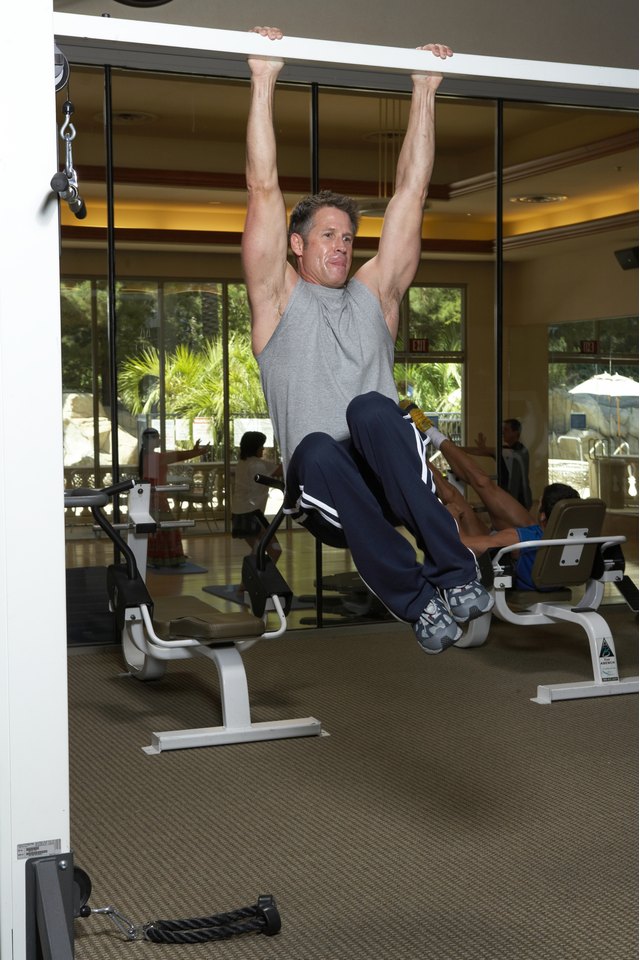What Is the Hardest Type of Pull-Up?

Because you’re lifting your entire body, the pull-up is considered the most difficult bodyweight exercise for the upper body. The challenge pivots on using the smaller muscles of your upper body as opposed to the large muscles of the lower body, such as your glutes. There are various ways to perform pull-ups which typically involve changing the grip. Because your weight isn’t centered and you rely more on your upper-back muscles than your biceps, the wide-grip pull-up is generally considered the hardest.
Different Grips
You can use different hand grips for pull-ups to target particular muscle groups. For example, using an underhand grip -- called a chin-up -- requires the use of your biceps and is the easiest. Easiest to hardest, the grips are underhand, neutral, narrow, standard and wide. For the neutral grip, you grab two short parallel bars that are perpendicular to the pull-up bar. This grip is narrow with palms facing each other. In the narrow grip, you use an overhand position on the pull-up bar. When your hands are shoulder-width apart, it’s considered a standard grip. The most difficult is the wide grip, in which your hands are about 6 to 8 inches wider than your shoulders, according to “Strength and Power Training for Martial Arts” by Martina Sprague.
Mixed Grip
An advanced pull-up is a mixed-grip pull-up in which you use a combined underhand and overhand grip. When performing a standard pull-up with a mixed-grip, you have to use your core muscles to prevent your torso from twisting side to side. To increase the difficulty, perform a mixed-grip commando pull-up in which you hold the bar like a baseball bat. Pull your body up, positioning your head to one side of the bar, until you touch your shoulder to the bar. Keep your elbows tucked in and legs crossed. If you perform the commando version with both legs raised and your body in the pike position, you’ll blast your core muscles.
Resistance
If you’re too strong for your body weight, your pull-up workouts may plateau regardless of a change in grip. You can either add resistance or lengthen the distance from the bottom of the pull-up to the bar. For example, perform a weighted pull-up by wearing a weight belt or holding a dumbbell between your ankles. Use a weight that is about five to 10 percent of your body weight and perform fewer but better-executed reps. Also try looping two small towels over the bar, grasping the ends of each towel in your right hand and left, respectively. Start in a hanging position, exhale and slowly lift your body up until your shoulders reach your hands. Inhale as you lower yourself back down.
Extra Motion
When you incorporate other movements into a pull-up, you boost the intensity of the exercise. For example, in a side-to-side pull-up, you pull your head and upper body toward your right hand when your chin is just above the bar and then return back to center before lowering your body back down. Repeat the sequence of movements to your left side on the next pull-up. As you grow stronger, you can lift your body, move from right to left at the peak position of the pull-up and then return back to center before the descent. You can also add knee or leg lifts as you pull up to increase the difficulty of the exercise.
References
Resources
Writer Bio
Kay Tang is a journalist who has been writing since 1990. She previously covered developments in theater for the "Dramatists Guild Quarterly." Tang graduated with a Bachelor of Arts in economics and political science from Yale University and completed a Master of Professional Studies in interactive telecommunications at New York University.
